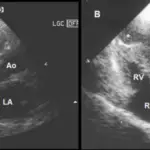Dilated cardiomyopathy is a condition that involves the muscle in the left ventricle wherein it stretches and thins out, leading to inadequate pumping of the blood.
What is the Pathology of Dilated Cardiomyopathy?
Dilated cardiomyopathy pathology is an idiopathic process that characterizes an enlarged ventricle with normal wall thickness.
How does Dilated Cardiomyopathy Present?
Dilated cardiomyopathy has a prevalence of 1 in 2,500 and presents with fatigue, dyspnea on exertion, orthopnea, edema, weight or increasing abdominal girth. Tachypnea, tachycardia, and hyper/hypotension is noted, as well as jugular venous distension, pulmonary edema, and s3 gallop.
How is Dilated Cardiomyopathy Diagnosed?
Dilated cardiomyopathy diagnosis include CBC, thyroid function test, cardiac markers, chest x-ray, electrocardiogram, 2D echo, and cardiac catheterization.
How is Dilated Cardiomyopathy Treated?
Dilated cardiomyopathy treatment include use of ACE inhibitors, ARBs, beta blockers, diuretics, nitrates, vasodilators, left ventricular assist device, biventricular pacing, automatic cardioverter-defibrillator, and heart transplantation.
What is the Prognosis of Dilated Cardiomyopathy?
Dilated cardiomyopathy prognosis is poor with most of the patients progressing to heart failure.



